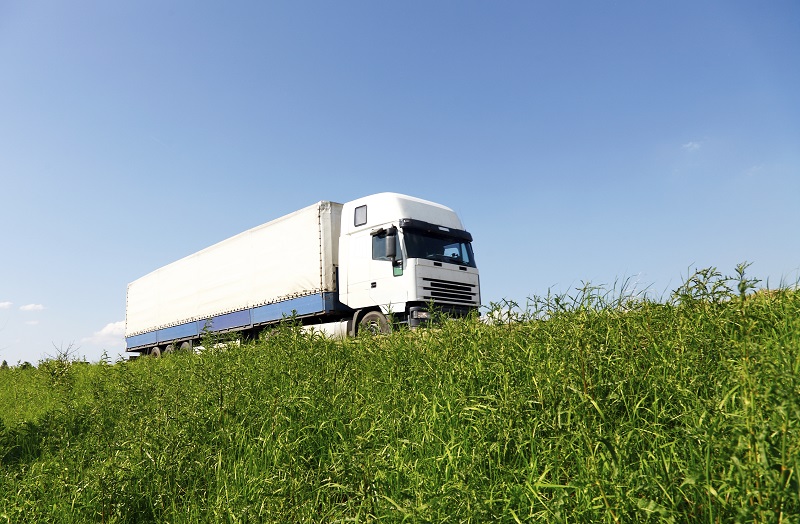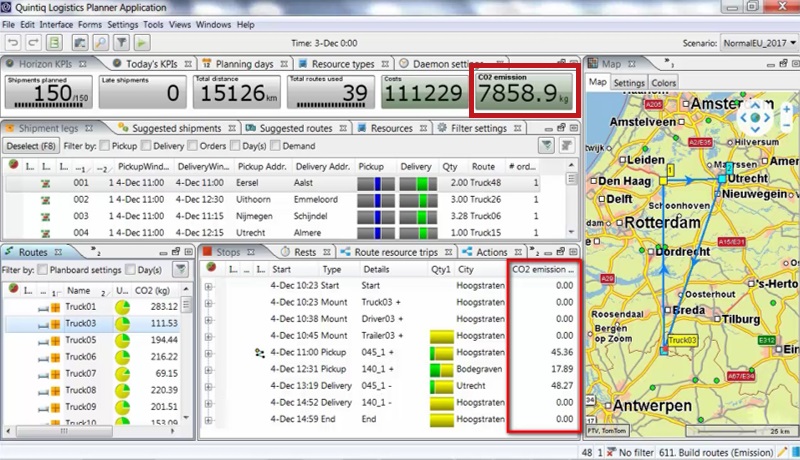
First, it’s important to take a moment to reflect on the word ‘sustainability’, as it has become such a prominent buzzword in today’s world. Sustainability means different things to different people, companies and industries. Some companies, like Starbucks and Walmart, view sustainability as a responsibility and, consequently, the discussion around sustainability is framed in a ‘should’ manner.
What I’ve witnessed over the past few years though, is that there are too many companies that don’t follow in the footsteps of Starbucks and Walmart – in terms of being explicit in both the steps and evaluation methods they employ to improve their operational sustainability models. For example, a company might state that they are aiming to reduce the carbon footprint of their operations by 20% within five years. However, it fails to outline an actionable plan and evaluation methodology to accomplish that goal.
The answer lies in your supply chain planning I’d like to take a moment to break through the noise of all the sustainability ‘should’ proclamations being advertised in today’s marketplace. To do so, I want to explain the ‘how’ behind some of the sustainability efforts I’ve seen in the retail industry recently, and hopefully embolden other companies to engage in similar efforts. The most impactful sustainability initiatives I’ve witnessed focus on social, economic and environmental values simultaneously as one entity, not in isolation. In almost all of these programs, the ‘how’ is driven behind the scenes by robust supply chain planning and optimization techniques that are able to link people, planet and profit for a triple effect on the bottom line.
One critical part of any supply chain optimization effort – regardless the focus – is constructing an adequate level of transparency and visibility of the supply chain itself. You cannot optimize something you cannot ‘see’ or measure. This is especially important when the focus is on improving your environmental or social footprint. Which industry leaders are equipped with supply chain visibility to drive sustainability? Patagonia and their Footprint Chronicles is one of them. Two other prominent examples are Target and Zara.
Transparency and visibility DELMIA Quintiq’s supply chain planning and optimization software has cemented itself as a global leader in helping companies increase the transparency and visibility of their supply chain. This is done through KPI (key performance indicators) tracking, advanced mapping as well as data integration & propagation. These are just a few of the capabilities that provide the foundation for DELMIA Quintiq’s world record optimization algorithms, which produce efficient supply chain plans and demystify the ‘how’ question for companies.
Now, let’s dig into the details of the ‘how’ behind sustainability improvements in the retail space. The ‘how’ can involve small changes in production or distribution models, without requiring change management initiatives. Or it can involve drastic shifts in operations, requiring significant capital and change management investments. This blog post is the first of a two-part series. In part one, I’ll explain supply chain planning and execution tweaks that can be applied without significant change management programs. Then in part two, I’ll highlight how more drastic shifts to supply chain networks and operations can have a larger impact potential, but they typically require a corresponding change management process.
Three examples, powered by optimization As a starting point, let’s take a sustainability dilemma that commonly presents itself in retail logistics. Dispatchers need to be able to expertly work within the confines of an existing resource fleet while coping with rising demands. Consumers tend to experience the bottlenecks of retail logistics networks during the holiday season when there is increased demand. This leads to extended overtime hours for drivers, long distance routes and night time deliveries. While a dispatcher’s first instinct may be to extend traditional resource limits to alleviate the bottlenecks, this is not the most sustainable nor typically the most efficient decision. Instead, dynamically optimizing last-mile deliveries can have a significant impact by improving utilization and decreasing miles driven to lower CO2 emissions. Optimization of last-mile deliveries is one of DELMIA Quintiq’s specialties.
If you dive deeper into recent trends in retail logistics, existing supply chain networks have been tasked with handling a significant increase in the number of returns. In order to minimize the environmental footprint of logistics operations, the crucial ‘how’ technique for this challenge centers on considering both return pickups and customer deliveries simultaneously. And this is done by coupling first-mile and last-mile planning decisions together during optimization. Fortunately, this is a well-studied situation that postal and express companies have been tackling. The postal and express industry is a space where DELMIA Quintiq has helped countless customers over the years. These customers include DHL Express, Lufthansa Cargo and Finnish Post, Posti.
The final ‘how’ example must start with a disclaimer: many technology vendors claim that they can help companies reduce CO2 emissions by merely focusing on reducing miles driven, without explicitly focusing on emissions as a criteria for optimization. While there is certainly a correlation between a reduction in driving distance and a reduction in CO2 emissions, there are other considerations that must be taken into account such as truck type, local carbon tax and type of driving (i.e. city versus highway) that can greatly impact CO2 emissions of a fleet. DELMIA Quintiq’s logistics planning software captures these differences in its CO2 emission calculations. Even better, it takes sustainability a step forward by creating an optimized plan according to the goal of directly minimizing CO2 emissions and considering the factors mentioned above, rather than through the proxy of minimizing distance.

The KPI for CO2 emission is displayed prominently in DELMIA Quintiq’s logistics solution and tracked for each leg of a route
What’s next? I hope the three examples above work to demystify the ‘how’ behind retail sustainability efforts. You will see that small tweaks to your supply chain planning and execution strategy can have a significant impact on all three dimensions of sustainability – social, economic and environmental.
